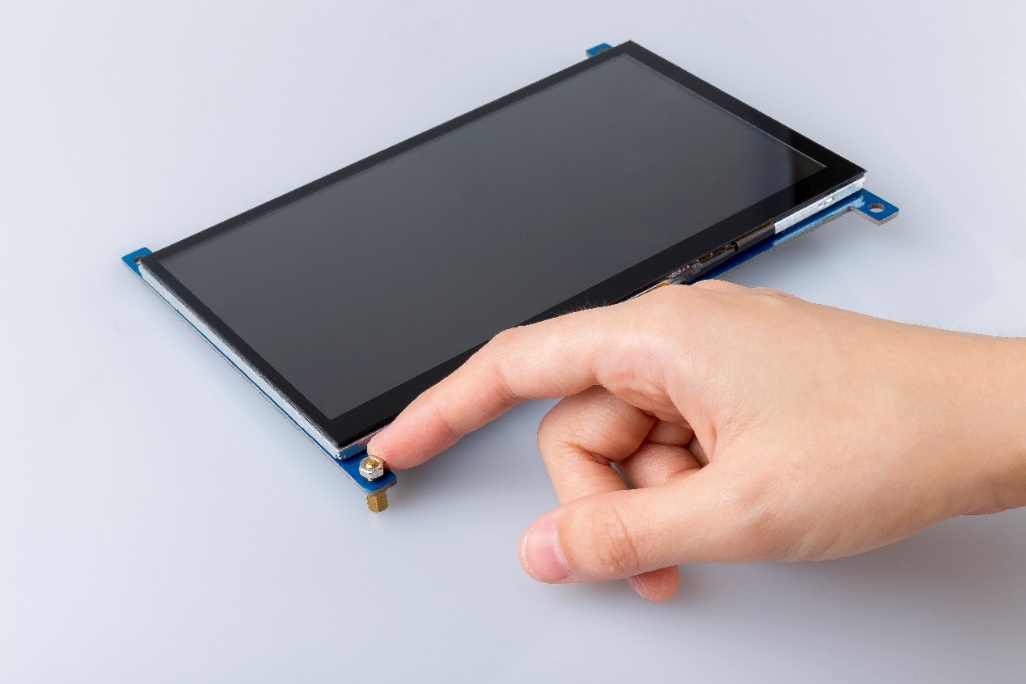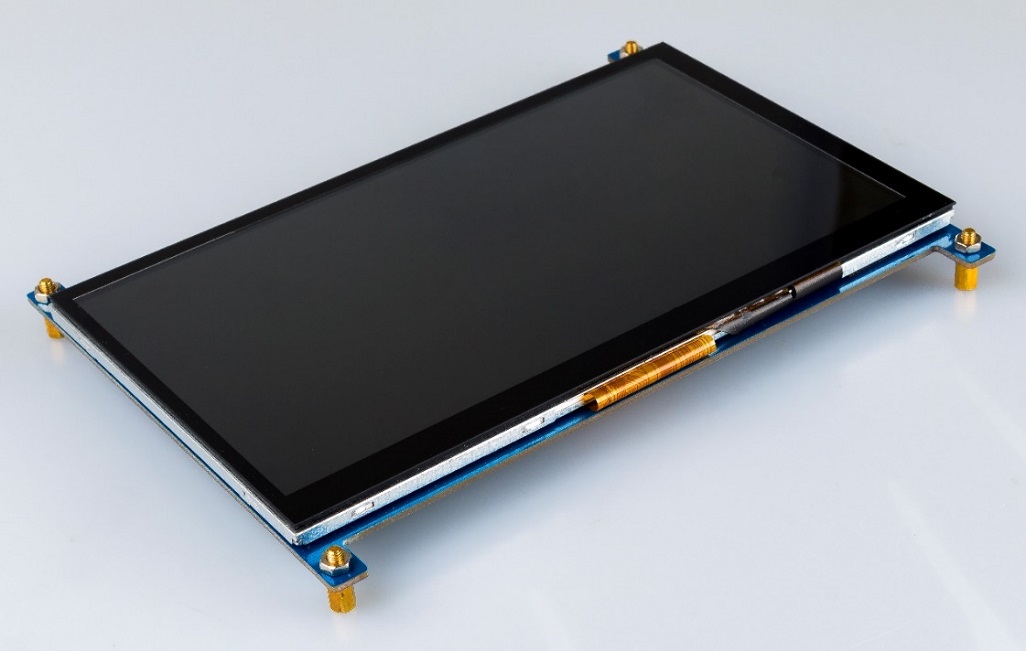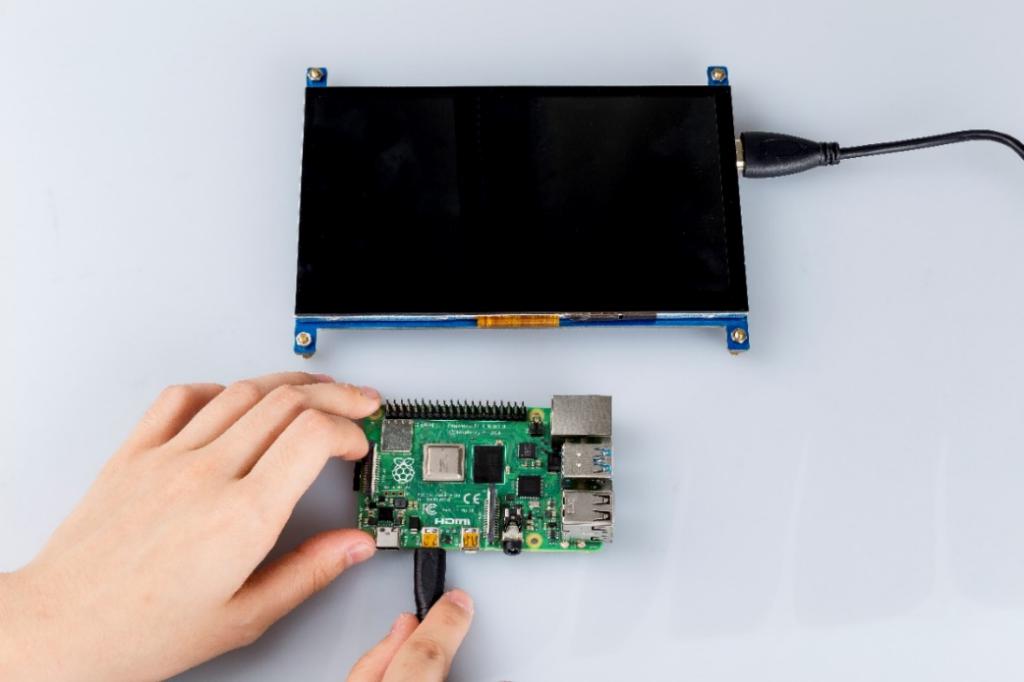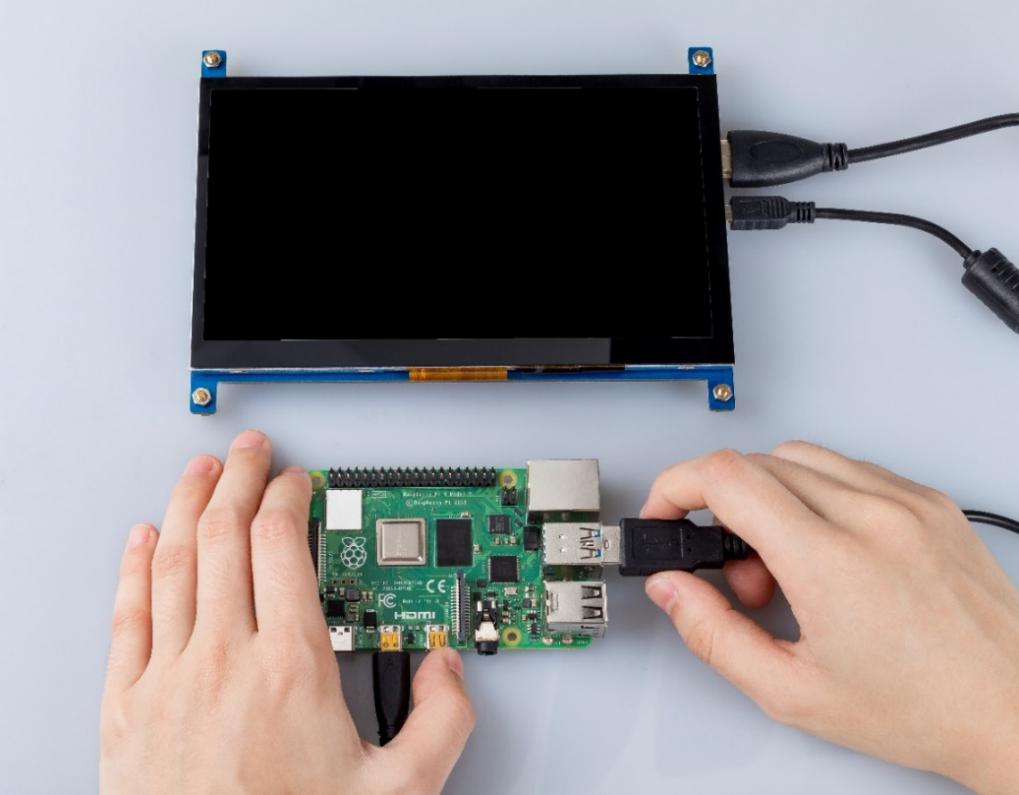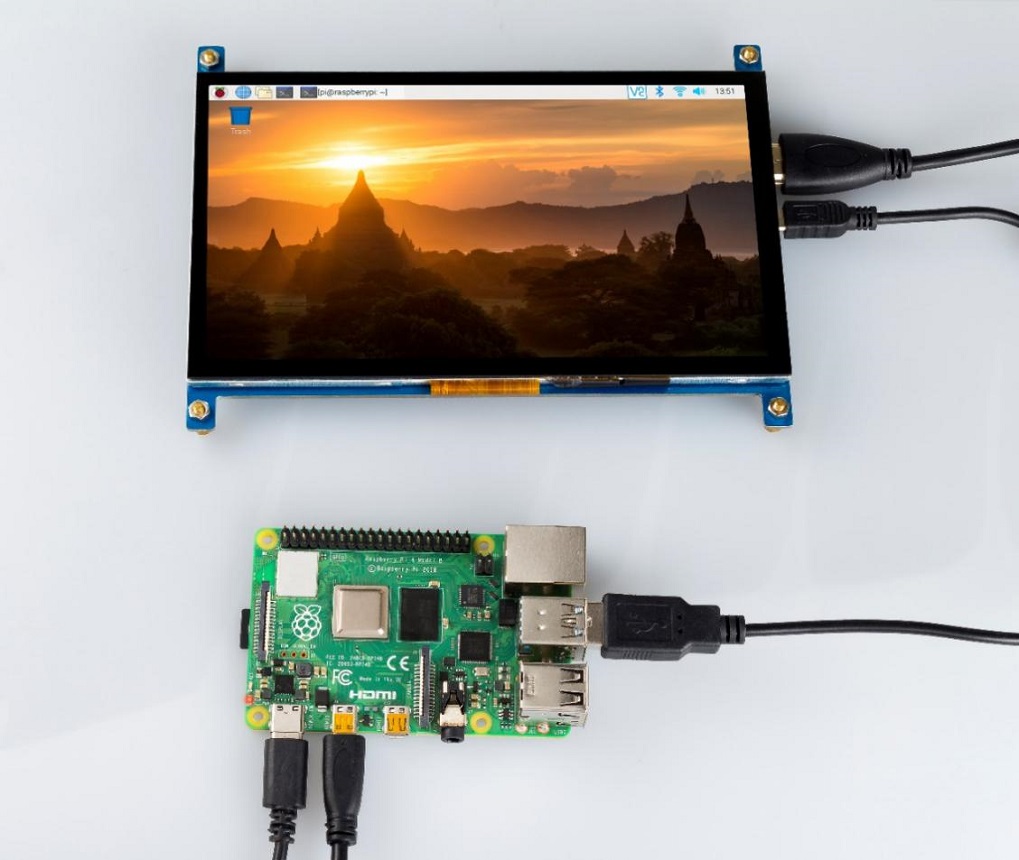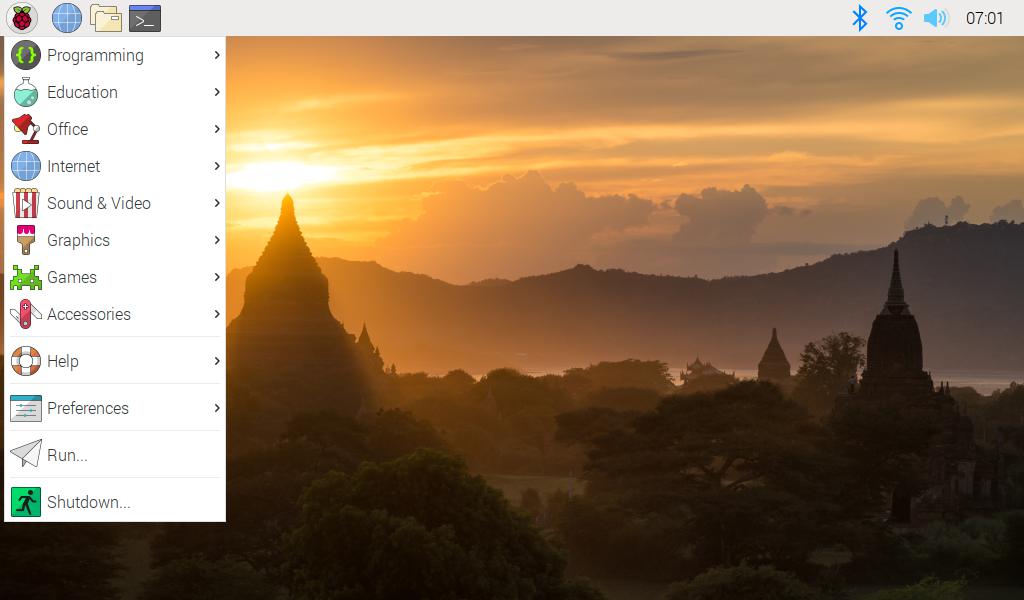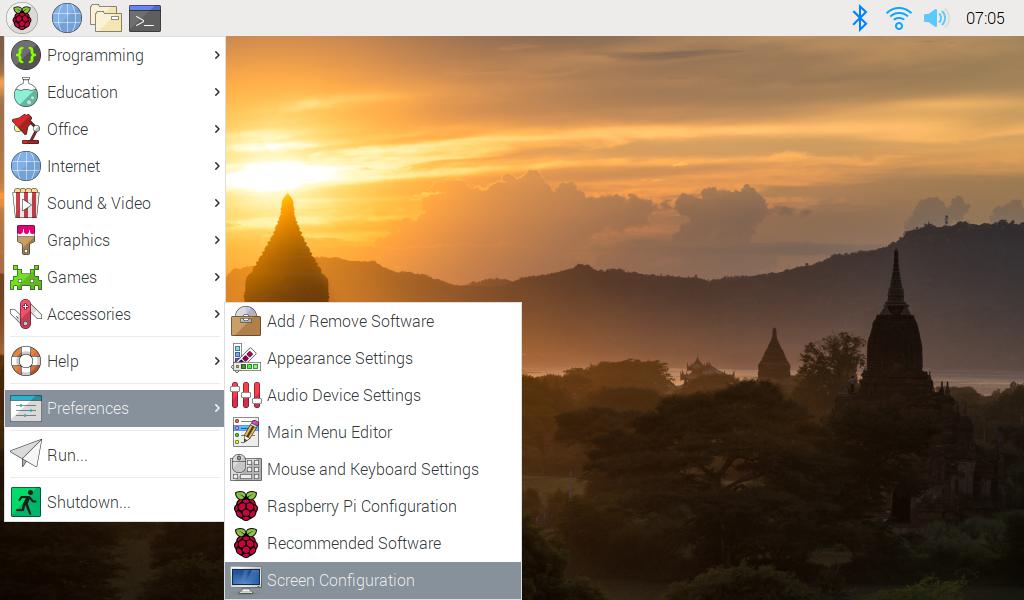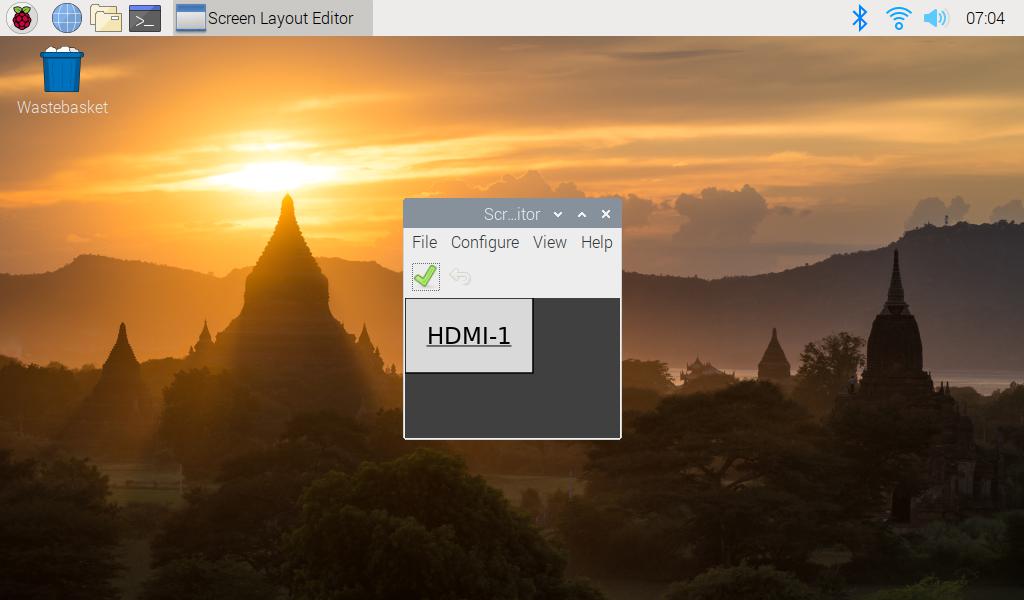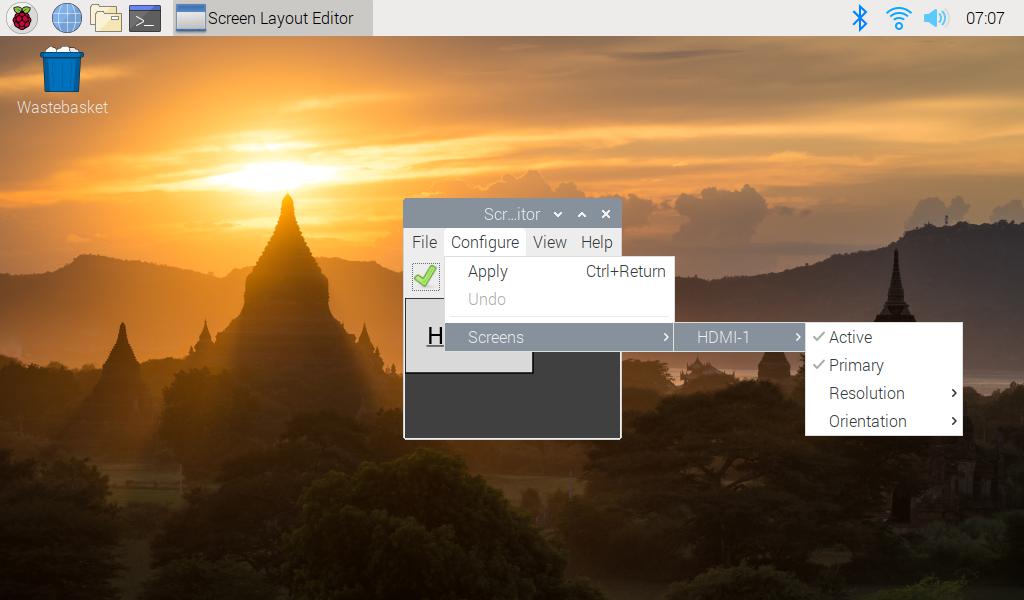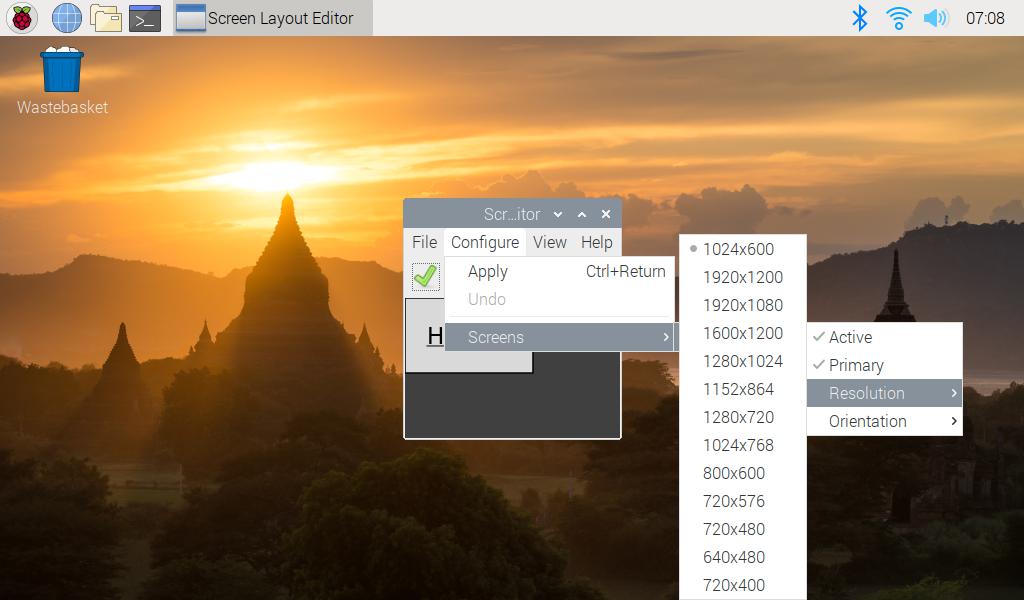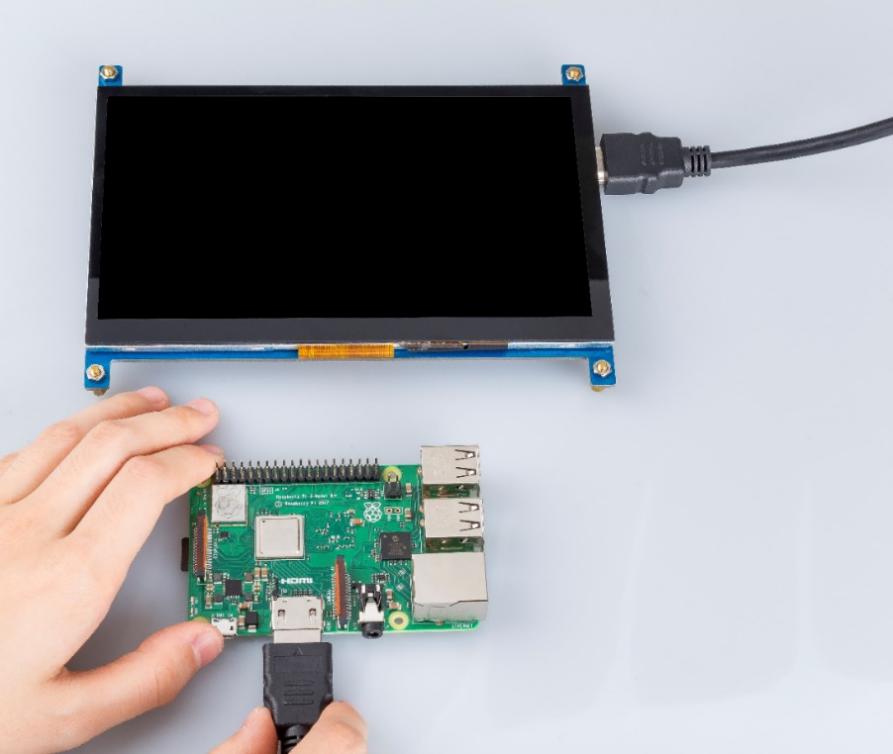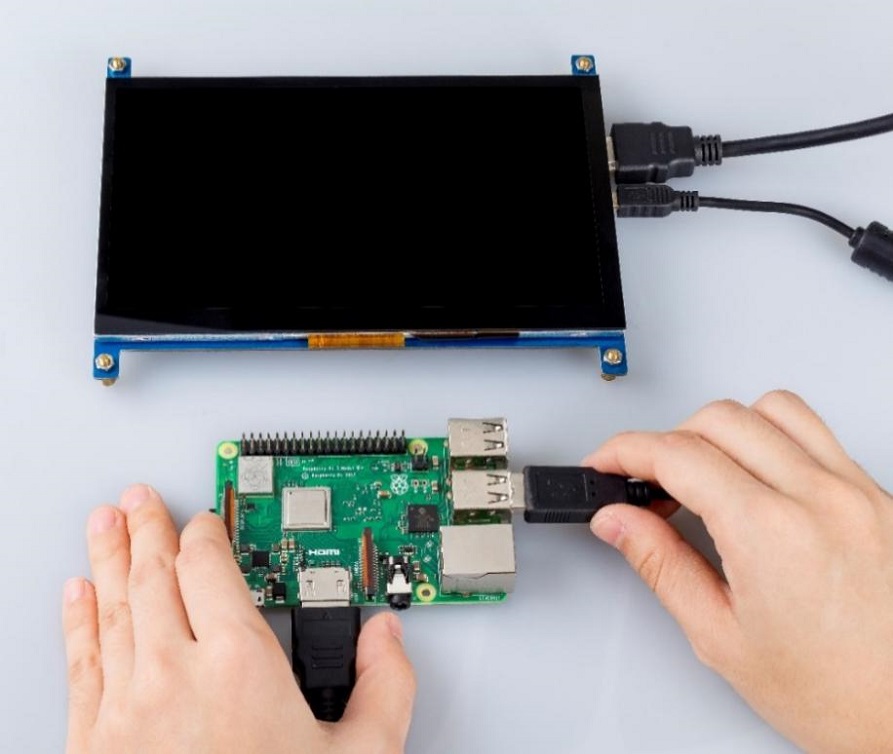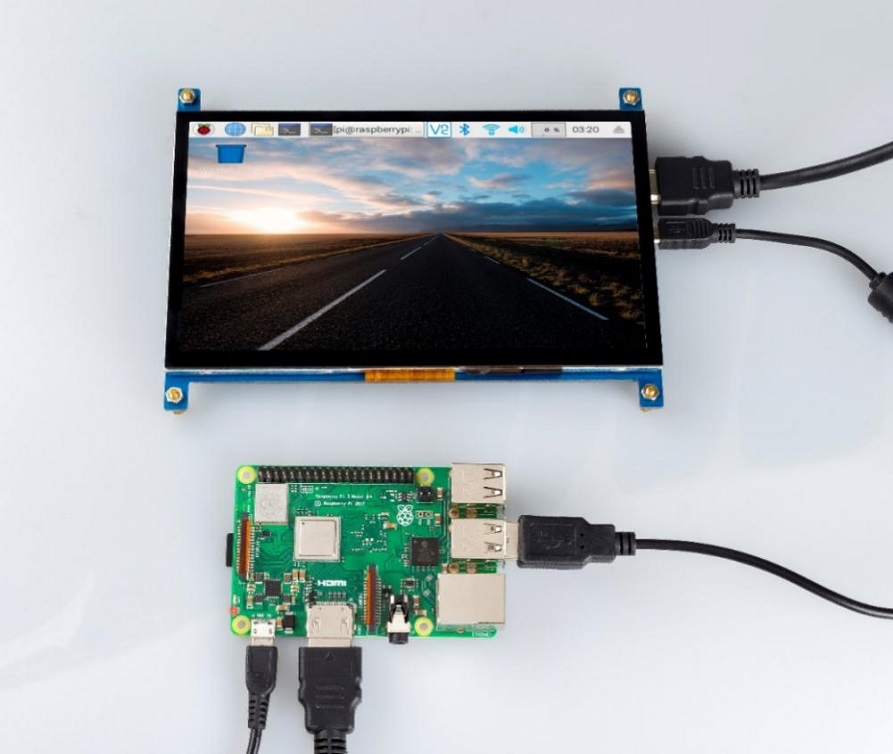Difference between revisions of "7 Inch DIY Touch Screen"
| Line 1: | Line 1: | ||
| + | ='''Overview'''= | ||
| + | '''Screen''': 7-inch Touch Screen<br> | ||
| + | '''Resolution''': 1024 x 600 (16:9)<br> | ||
| + | '''Input Signal''': HDMI<br> | ||
| + | '''Module Size''': 165.30(W) x121(H) x 7.75(T)<br> | ||
| + | '''Active Area''': 154.21(mm) x 85.92(mm).<br> | ||
| + | This Raspberry Pi touchscreen has HD 1024 x 600 resolution, 16.7M (8bit) color numbers, giving high color restoration display. Rectangular ratio 16:9 displays format conversion. IPS 170° full wide visual angle gives you a crystal-clear viewing experience.<br> | ||
| + | It supports Raspbian/Win7/Win8/Win10(Plug and play), Android/Linux (need to be configured first). <br> | ||
| + | Equipped with Micro USB and HDMI port support, the screen can be connected to the device via HDMI interface and be powered via USB. Achieving touch function powered by USB doesn’t need power cord or drive-free.<br> | ||
| + | |||
| + | [[File:图片1.png]]<br> | ||
| + | |||
| + | ='''Burn the System to TF Card'''= | ||
| + | Note:<br> | ||
| + | *Do not install the Raspbian system by means of NOOBS, otherwise there appears touch failure.<br> | ||
| + | *On other displays, if you have installed the system on your Raspberry Pi by means of NOOBS, you can still use the 7-inch touch screen. <br> | ||
| + | *If you have already installed the system, you can directly skip this chapter. Turn to next chapter to refer to Connect the Raspberry Pi and Screen, and you can get to use the 7-inch touch screen. <br> | ||
| + | |||
| + | '''Step 1'''<br> | ||
| + | Prepare the tool of image burning. Here we use the Etcher. You can download the software from the link:https://www.balena.io/etcher/<br> | ||
| + | |||
| + | '''Step 2'''<br> | ||
| + | Download the complete image on the official website by clicking this link: https://www.raspberrypi.org/downloads/raspbian/.<br> | ||
| + | There are three different kinds of Raspbian Stretches available, among which the '''Raspbian Stretch with desktop and recommended software''' will be the best choice if you have no other special requirements.<br> | ||
| + | |||
| + | [[File:图片2.png]]<br> | ||
| + | |||
| + | '''Step 3'''<br> | ||
| + | Unzip the package downloaded and you will see the xxxx-xx-xx-raspbian-stretch.img file inside. <br> | ||
| + | *Note: DO NOT extract the file. | ||
| + | |||
| + | '''Step 4'''<br> | ||
| + | With the application of Etcher, flash the image file, raspbian into the Micro SD card.<br> | ||
| + | |||
| + | [[File:图片3.png]]<br> | ||
| + | |||
| + | At this point, the Micro SD card pops up. Insert the Micro SD card into the Raspberry Pi.<br> | ||
| + | |||
='''Supporting the Seven-inch Screen'''= | ='''Supporting the Seven-inch Screen'''= | ||
Use a nut (M3) and a copper post (M3 * 8 + 6) to support the seven-inch touch screen.<br> | Use a nut (M3) and a copper post (M3 * 8 + 6) to support the seven-inch touch screen.<br> | ||
Revision as of 09:00, 8 November 2019
Contents
Overview
Screen: 7-inch Touch Screen
Resolution: 1024 x 600 (16:9)
Input Signal: HDMI
Module Size: 165.30(W) x121(H) x 7.75(T)
Active Area: 154.21(mm) x 85.92(mm).
This Raspberry Pi touchscreen has HD 1024 x 600 resolution, 16.7M (8bit) color numbers, giving high color restoration display. Rectangular ratio 16:9 displays format conversion. IPS 170° full wide visual angle gives you a crystal-clear viewing experience.
It supports Raspbian/Win7/Win8/Win10(Plug and play), Android/Linux (need to be configured first).
Equipped with Micro USB and HDMI port support, the screen can be connected to the device via HDMI interface and be powered via USB. Achieving touch function powered by USB doesn’t need power cord or drive-free.
Burn the System to TF Card
Note:
- Do not install the Raspbian system by means of NOOBS, otherwise there appears touch failure.
- On other displays, if you have installed the system on your Raspberry Pi by means of NOOBS, you can still use the 7-inch touch screen.
- If you have already installed the system, you can directly skip this chapter. Turn to next chapter to refer to Connect the Raspberry Pi and Screen, and you can get to use the 7-inch touch screen.
Step 1
Prepare the tool of image burning. Here we use the Etcher. You can download the software from the link:https://www.balena.io/etcher/
Step 2
Download the complete image on the official website by clicking this link: https://www.raspberrypi.org/downloads/raspbian/.
There are three different kinds of Raspbian Stretches available, among which the Raspbian Stretch with desktop and recommended software will be the best choice if you have no other special requirements.
Step 3
Unzip the package downloaded and you will see the xxxx-xx-xx-raspbian-stretch.img file inside.
- Note: DO NOT extract the file.
Step 4
With the application of Etcher, flash the image file, raspbian into the Micro SD card.
At this point, the Micro SD card pops up. Insert the Micro SD card into the Raspberry Pi.
Supporting the Seven-inch Screen
Use a nut (M3) and a copper post (M3 * 8 + 6) to support the seven-inch touch screen.
Rendering
This 7-inch touch screen is compatible with any version of the Raspberry Pi.
With a Raspberry Pi 4
Connect the Raspberry Pi 4 to HDMI with a micro HDMI cable.
Wire the USB cable up to Raspberry Pi 4.
Give it a power supply, Plug and play.
Adjust the Resolution of Raspberry Pi 4
Step 1: Unfold the menu bar of Raspberry Pi.
Step 2: Select screen configuration.
Step 3: Select Configure.
Step 4: Select Screens.
Step 5: Choose the resolution you want.
With a Raspberry Pi 3
Plug a dual-head HDMI cable in Raspberry Pi 3.
Connect the Raspberry Pi 3 with a USB cable.
Attach a power supply to it, turn it on.
Adjust the Resolution of Raspberry Pi 3
Step 1: Open config.txt
There are two methods to do so.
Method A:First prepare a computer on Windows, Mac or Linux, and a TF card on which the Raspbian system has been burnt. Plug the TF card into the computer with a card reader.Now, open /boot and find the config.txt file. If your computer runs on Windows, DO NOT open the file by Word (also better not notepad) in case of format issues. You are advised to use other edit tools like Notepad++ .
Method B:Log in to Raspberry Pi remotely. Run the command to edit config.txt
sudo nano /boot/config.txt
Step 2: Modify the /boot/config.txt file
In either way, now the file config.txt is opened.
1.Define a custom CVT mode (since Raspberry Pi uses the standard rate when 1024x600 is not included,you need to set the aspect ratio as 16:9, i.e. 1024x576) add the following lines below #hdmi_force_hotplug=1.
hdmi_cvt=1024 576 60 3 0 0 0
hdmi_cvt=<width> <height> <framerate> <aspect> <margins> <interlace>
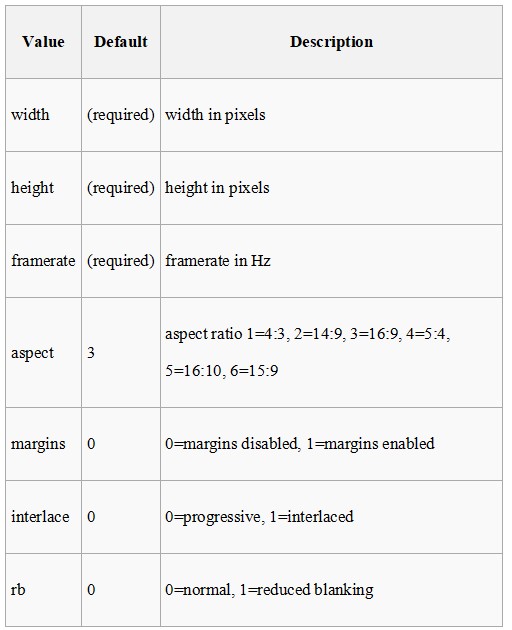
2.Find the following lines (If there is a "#" mark at the beginning of any of the three lines, which means they are comments, delete the mark. The asterisk "*" represents the value.
hdmi_group=* hdmi_mode=* hdmi_drive=*
3.Modify the value,like this:
hdmi_group=2 hdmi_mode=87 .... hdmi_drive=2
hdmi_group=2 means DMT (Display Monitor Timings; the standard typically used by monitors)
hdmi_mode=87 indicates the resolution bit.
hdmi_drive=2 selects the Normal HDMI mode.
For more details about configuring config.txt, refer to Raspberry Pi official website: https://www.raspberrypi.org/documentation/configuration/config-txt.md.
After the modification is done, save and exit.
Step 3: Connect Raspberry Pi
If you change the commands on your PC, after mounting the TF card safely, plug it into the Raspberry Pi. Then connect the power of the Raspberry Pi and the display.
If you log in the Raspberry Pi remotely with ssh, type in the command sudo reboot.



